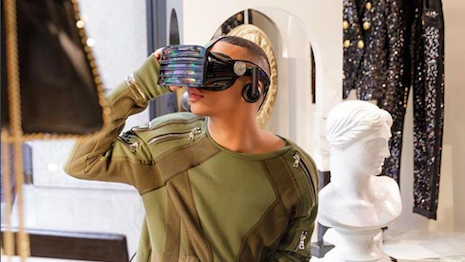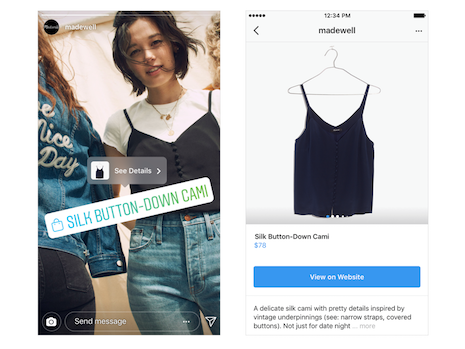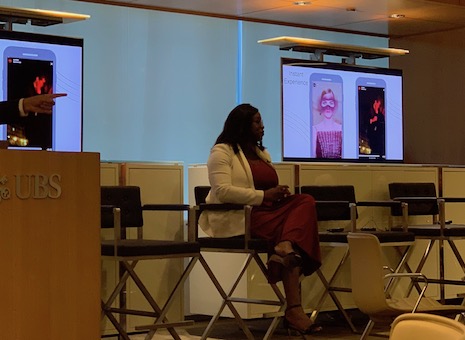 Balmain is one of the luxury brands partnering with Facebook on virtual reality. Image credit: Balmain
Balmain is one of the luxury brands partnering with Facebook on virtual reality. Image credit: Balmain
NEW YORK – Luxury brands are embracing new forms of storytelling via social media, but they are innovating carefully to protect their heritage and positioning, according to Facebook’s head of luxury.
When it comes to technology, luxury brands should not be afraid of taking risks, as those that stand out will be the brands that last. During a fireside chat with Luxury Daily editor in chief Mickey Alam Khan at the Luxury Marketing Forum on Sept. 26, the executive noted that storied houses have generally come a long way in digital marketing in a matter of a few years, but they are still undergoing a shift from their expertise in traditional media to newer formats.
"Luxury brands want to be innovative, they have a rich heritage to protect—over 100 years old in some cases—but at the same time, they have this desire to showcase their brand in a new way and a fresh manner," said Morin Oluwole, Paris-based head of luxury at Facebook and Instagram. "It’s just that a lot of the times, the brands don’t necessarily know what to do and how to do so without tarnishing their brand reputation."
The Luxury Marketing Forum was organized by Luxury Daily. UBS was venue sponsor.
Social media
Facebook is responding to consumer behavior with three current areas of focus across properties such as Instagram and WhatsApp.
Stories, which are short-form ephemeral pieces of content that disappear after 24 hours, are gaining ground among both brands and users.
Meanwhile, Instagram is catering to consumers’ product discovery habits with additional shopping features. Whereas a consumer may have previously shown a photo to an employee at a boutique, today the platform is giving shoppers more tools to either organically or intentionally find merchandise.
Shoppable Stories on Instagram. Image credit: Instagram
Instagram is making additional moves into shopping as it increasingly positions itself as a place for commerce as well as conversations.
The platform is rolling out Shopping on Stories to a wider array of brands as well as testing out a Shopping feature on its Explore hub. These launches come as the brand is said to be working on a standalone shopping application (see story).
Facebook is also focusing on messaging as a one-to-one platform, including peer-to-peer connections and brand-consumer interactions. In countries where SMS is expensive, Facebook’s WhatsApp is used more, whereas markets with more accessible texting tend to favor Facebook Messenger.
When it comes to differentiating between Facebook and Instagram, Ms. Oluwole says that the complementary platforms are used for different types of engagements.
Facebook tends to be used more for interactions with those whom consumers know, whereas Instagram lends itself more to following brands and other users who may not be personal connections.
Instagram post from Dior
Those that follow luxury brands on Instagram come from all age groups, but they share certain characteristics. They tend to use Instagram seven days a week, checking their application 14 times a day, which is greater than the average consumer.
Over the past four years, the luxury division at Facebook has worked with brands to address their specific needs.
Luxury houses are used to shooting for print, so the company’s teams help marketers develop content in a mobile-centric manner.
Morin Oluwole speaking at Luxury Marketing Forum
By 2020, 78 percent of Internet traffic will be related to video, making it a key format for luxury marketing.
Virtual worlds
Aside from stories, messaging and shopping, Facebook is also leaning into virtual and augmented reality.
Facebook worked with Dior to build an augmented reality sunglass try-on experience, allowing shoppers to see what they would look like in frames in a virtual format.
Balmain is also working with Facebook’s Oculus to live-stream its runway show during Paris Fashion Week. On Sept. 28, consumers with Oculus headsets can tune in to the show in 360 degrees.
Earlier this year, Facebook began selling the headsets for $199, looking to open up AR and VR to a greater population of consumers (see story).
"We’re in the early stages of AR testing," Ms. Oluwole said.
"Our goal is to determine and measure how that translates into business goals tomorrow, but the objective is to really focus on discovery, interactivity with consumers, and then also use that as a business-driving tool for tomorrow."

